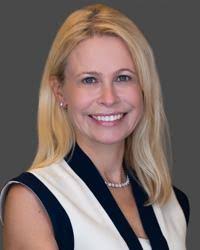Expert Interview: Kendall Donaldson, MD, MS

Vote for the 2025 Keratoconus Doctor of the Year
April 11, 2025
KC Patient Stories: Meet John
April 11, 2025 An interview with Kendall Donaldson MD, MS
An interview with Kendall Donaldson MD, MS
Professor of Clinical Ophthalmology
Cornea/Cataract/Refractive Surgery
Bascom Palmer Eye Institute University of Miami Miller School of Medicine
What inspired you to specialize in keratoconus care?
I have an unusual store — my journey into ophthalmology started in third grade. I was highly myopic as a child and got interested in eyes when I was 7 or 8 years old. My third-grade science fair project was building a model eye. I always admired and wanted to be like my optometrist. Over time, I gravitated toward the surgical side of eye care. Initially, I was drawn to refractive surgery, even before it was approved in the U.S., as I was hopeful that my own vision could be improved with refractive surgery. I was intrigued that we could improve vision through procedures on the cornea or the lens and make a dramatic difference in a patient’s life very quickly. Corneal work gave me the opportunity to help patients see well — and fast That’s where keratoconus fits in. Many patients come to my clinic only after experiencing devastating vision loss in their second eye. Oftentimes, they find ways to work around vision loss in one eye, as they are able to compensate with the better seeing eye. When the second eye is then affected, they are no longer able to compensate and present with a delayed diagnosis which limits treatment options. It’s a very sad situation that happens much too frequently to all of us who treat keratoconus patients. We really need to work together to diagnose and treat these patients before they reach a point in the disease course which is irreversible and may lead to permanent vision loss.
What is the most rewarding part of working with keratoconus patients?
Being able to intervene early and know you’ve changed the trajectory of someone’s life is the most rewarding part of working with keratoconus patients. If we cross-link someone in their teens or twenties, it can affect their ability to drive and follow a desired career path. It’s incredibly rewarding to know that they’ll remain functional and independent because of our treatment. When I started practicing ophthalmology 20 years ago, we performed so many transplants on keratoconus patients. Now, with cross-linking, we can often prevent significant vision loss. Patients who undergo transplants often live with eye care at the center of their lives with worries of rejection, infection, or even globe rupture. I truly believe that cross-linking can dramatically change a person’s life when performed in at timely manner with early identification of these patients through widespread education and screening.
How can patients advocate for themselves to get answers and an accurate diagnosis sooner?
The burden of early diagnosis shouldn’t fall on the patients — it’s a systems issue. Many people don’t even have routine eye care. They first seek help when their vision is already compromised. To catch keratoconus earlier, we need national efforts — through the school system or pediatricians. Screenings before age 18 could help us diagnose it before it leads to devastating vision loss.
What advice would you give to someone newly diagnosed with keratoconus?
Educate yourself. It’s a chronic condition that affects you throughout life, even when stable. For example, keratoconus affects how we approach cataract surgery later in life. Patients who understand their condition tend to have better outcomes. I also recommend joining NKCF to access community and information. Share your story. Connect with others who have keratoconus. This helps create awareness and supports earlier diagnosis in others. And I always suggest patients maintain their own record of topographies. Keep them on your phone — that way, when you see different providers, they have the data they need. It really helps with continuity of care.
What keeps you motivated to continue advancing care for keratoconus patients?
It’s the dramatic difference we can make with early diagnosis and treatment — it’s amazing! But every time I meet a patient who lost vision because of delayed diagnosis, I think, “How can we make sure that never happens again?” My dream is to never meet another patient whose vision loss could have been prevented.



